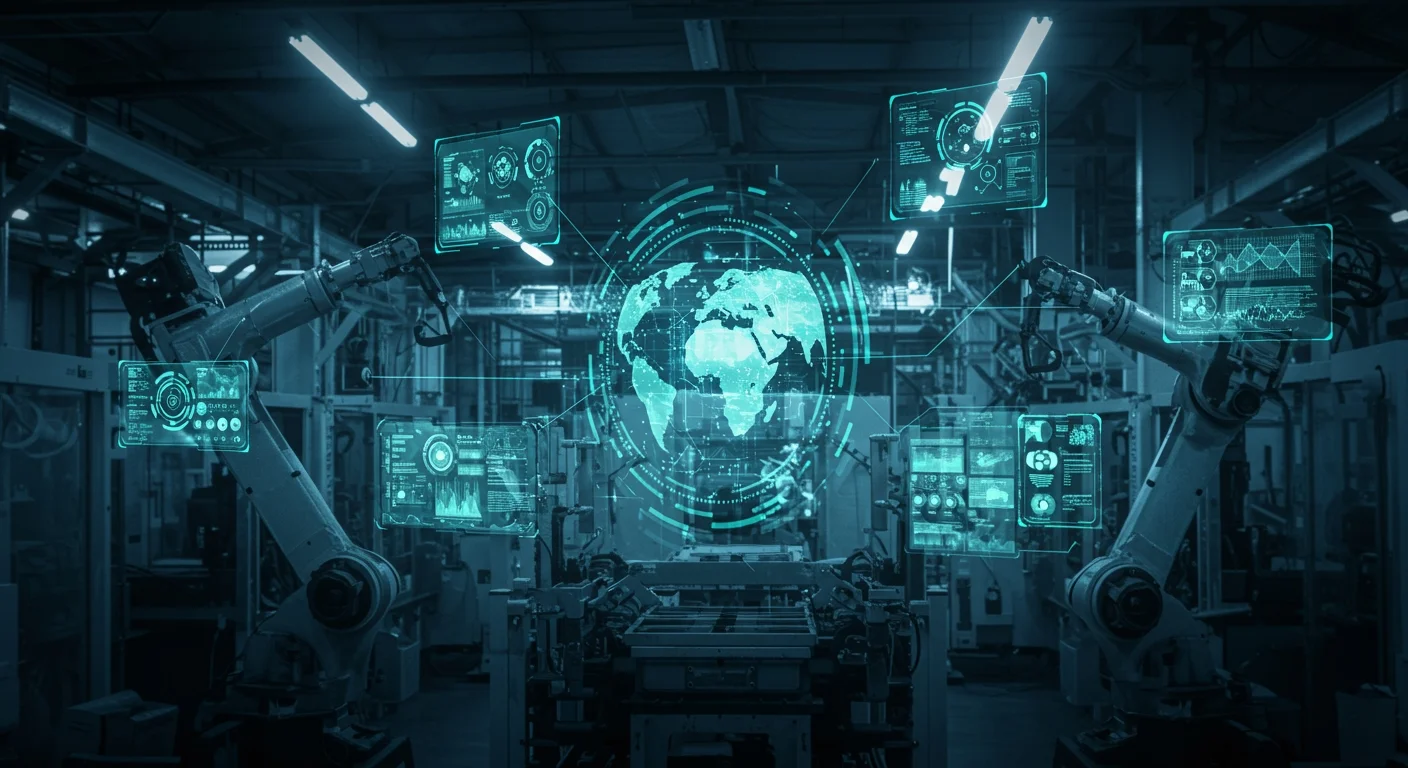(MENAFN- AIIEM) Table of Contents The Dawn of Smart Factories and IoT Integration The Core Pillars of Smart Factories Benefits of IoT Integration in Manufacturing Key Challenges and Solutions in Adopting Smart Factories and IoT Integration Future Trends in Industrial Engineering Conclusion: The Intelligent Industrial Revolution
The Dawn of Smart Factories and IoT IntegrationThe landscape of modern manufacturing is undergoing a profound transformation, spearheaded by the advent of Smart Factories and IoT Integration . This paradigm shift, often referred to as Industry 4.0, represents a monumental leap from traditional production lines to highly intelligent, interconnected, and adaptive systems. In essence, a smart factory leverages the Internet of Things (IoT), artificial intelligence (AI), big data analytics, and advanced robotics to create an environment where machines, sensors, and humans collaborate seamlessly. This integration leads to unparalleled levels of efficiency, productivity, and innovation, fundamentally reshaping the future of industrial engineering.
The Core Pillars of Smart FactoriesUnderstanding the foundational elements is crucial to grasping the power of smart factories.
Connectivity and Data ExchangeAt the heart of any smart factory is robust connectivity. IoT devices – sensors, actuators, and smart machines – constantly collect and exchange vast amounts of data. This real-time data flow, facilitated by high-speed networks (5G, Wi-Fi 6), ensures that every component in the production line is aware of others, enabling dynamic adjustments and coordinated operations. This pervasive data exchange is what transforms isolated machines into a cohesive, intelligent network.
Real-time Analytics and AIRaw data is just information; its true value emerges through analysis. Smart factories employ advanced analytics and AI algorithms to process the collected data, identifying patterns, predicting failures, and optimizing processes. This allows for proactive decision-making, moving from reactive problem-solving to predictive optimization. For instance, AI can analyze production data to pinpoint bottlenecks or anticipate equipment malfunctions long before they occur.
Automation and RoboticsWhile not new, automation takes on a new dimension within smart factories. Collaborative robots (cobots) work alongside human operators, performing repetitive or dangerous tasks with precision. Autonomous guided vehicles (AGVs) transport materials, and automated quality inspection systems ensure product consistency. This elevated level of automation not only boosts output but also improves safety and reduces human error.
Benefits of IoT Integration in ManufacturingThe strategic implementation of IoT brings a multitude of advantages to manufacturing operations.
Enhanced Efficiency and ProductivityBy monitoring every aspect of the production process in real-time, smart factories can identify and eliminate inefficiencies. This leads to optimized resource utilization, reduced waste, and significantly higher throughput. Predictive models ensure that machinery operates at peak performance, minimizing downtime.
Predictive MaintenanceOne of the most impactful benefits is the shift from scheduled or reactive maintenance to predictive maintenance. Sensors on machinery continuously monitor parameters like temperature, vibration, and energy consumption. When anomalies are detected, the system can alert maintenance teams to potential issues, allowing for interventions before a costly breakdown occurs. This saves time, money, and extends the lifespan of assets. For more details on this, see our article on Optimizing Production with AI .
Improved Quality ControlIoT sensors and computer vision systems can perform continuous quality checks throughout the production process. This ensures that products meet specified standards at every stage, reducing defects and rework. Any deviations can be immediately flagged, allowing for swift corrective action, leading to a higher overall product quality and customer satisfaction.
Key Challenges and Solutions in Adopting Smart Factories and IoT IntegrationWhile the benefits are clear, the transition to a smart factory model is not without its hurdles.
Data Security and PrivacyConnecting thousands of devices creates a vast attack surface, making data security a paramount concern. Protecting sensitive production data and intellectual property from cyber threats is crucial. Solutions include robust encryption, multi-factor authentication, network segmentation, and regular security audits. Companies must invest heavily in cybersecurity infrastructure and training to mitigate these risks.
Interoperability IssuesFactories often comprise machinery from various vendors, each with its own communication protocols. Ensuring that all these disparate systems can effectively communicate and share data is a significant challenge. Adopting open standards, using middleware solutions, and investing in IoT platforms that support diverse protocols are key to overcoming interoperability barriers. Research institutions like the Fraunhofer Institute often publish papers on these topics; for example, you can find insights into industrial communication protocols on their official website .
Workforce Skilling and AdaptationThe shift to smart factories demands new skills from the workforce. Traditional roles may diminish, while new ones requiring data analysis, AI oversight, and robotics maintenance emerge. Companies must invest in comprehensive training and reskilling programs to prepare their employees for these new roles. This human element is critical for successful adoption and long-term sustainability.
Future Trends in Industrial EngineeringThe evolution of smart factories continues, driven by emerging technologies:
Edge Computing: Processing data closer to its source reduces latency and bandwidth requirements, crucial for real-time applications. Digital Twins: Virtual replicas of physical assets, processes, or systems used for simulation, analysis, and optimization. Blockchain for Supply Chain: Enhancing transparency and traceability across complex supply chains. Generative AI in Design: AI assisting in product design and process optimization, accelerating innovation cycles. Sustainable Manufacturing: Smart technologies enabling more energy-efficient and environmentally friendly production processes.






















Comments
No comment